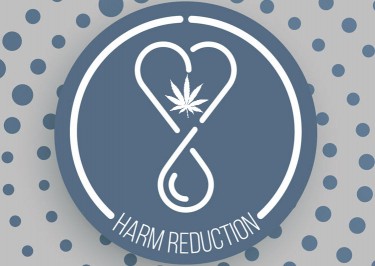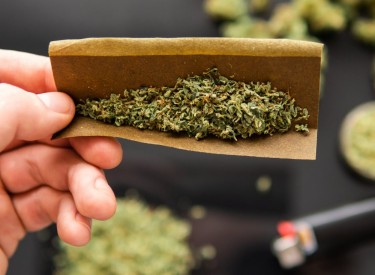Cannabis News
What Happened to Mexico’s Marijuana Market and What Do Cartels Think about Cannabis Legalization Now
Published
1 year agoon
By
admin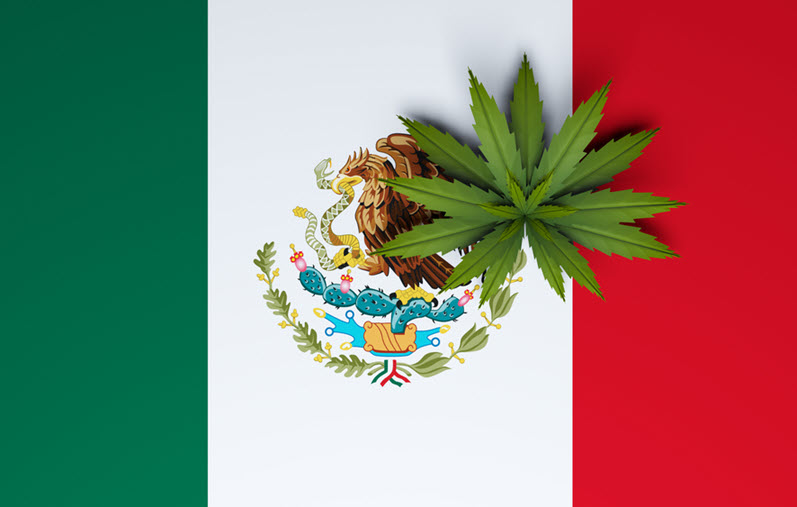

What happened to Mexico’s Marijuana Market & why the Cartels are Interested in Legalization
As we all know, Mexico has been a hotbed of drug-related violence and corruption for decades, with powerful cartels controlling much of the country’s illicit drug trade.
But what about cannabis legalization? Well, that’s a whole other story. While many had hoped that Mexico would follow in the footsteps of its northern neighbor and legalize cannabis, the reality is that legalization seems to have fallen off the map.
So, what happened? Why has there been a deafening silence on the topic of cannabis legalization in Mexico? Was it just a pipe dream? Or have other forces at play put a stop to progress on this front?
But, as is often the case with drug policy, things are never quite as straightforward as they seem. While the government may have dragged its feet on cannabis legalization, that doesn’t mean that cannabis use has come to a halt in Mexico. In fact, far from it.
In the absence of legal cannabis, activists have taken matters into their own hands, setting up makeshift cannabis dispensaries and cultivating their own crops. And while these activists are certainly making strides in the fight for cannabis legalization, they’re not the only ones interested in the lucrative potential of legal cannabis in Mexico.
That’s right, partner, the cartels have their sights set on the legal cannabis market in Mexico. With their fingers already in the proverbial pie when it comes to the illicit drug trade, it’s not hard to see why they’d be interested in branching out into legal cannabis.
So, buckle up, folks, because we’re about to take a wild ride through the complex and often-confusing world of drug policy in Mexico. We’ll be exploring everything from the government’s lack of progress on cannabis legalization to the rise of the activist movement and the growing interest of the cartels in legal cannabis.
It’s a wild ride, but one that’s sure to shed some light on the ongoing struggle for drug policy reform in Mexico.
Let’s take a trip down memory lane and check out the history of recreational marijuana use in Mexico. In the early 16th century, those Spaniards introduced marijuana to Mexico through hemp, using it to make ropes and textiles. But when the subsidies from the Spanish vanished after the Mexican War of Independence, the production of marijuana fell to its lowest point.
Academic research studies have shown that the Mexican people have used marijuana for ritual and divination purposes for a long time. They used it for recreational purposes along with pain cures, and it was freely used by people until 1898. But then, in 1882, a military hospital banned its use for recreational purposes because of the problems associated with it, including violence, crimes, and disorders.
Things took a turn for the worse when in 1920, Mexican law prohibited the sale, purchase, production, and use of recreational marijuana, and Mexico completely banned the export of weed in 1927. Then the US government launched a controversial program during the 1970s to eradicate the production of weed and poppy fields in Mexico, using helicopters and other tools to spray paraquat on cannabis fields, which contaminates marijuana and other herbs.
But don’t worry, friends! In August 2009, Mexico-marijuana lawmakers established a law that allowed the possession of small amounts of cannabis. The government decriminalized marijuana to reduce illegal drug activity and allowed five grams of cannabis for personal consumption. They even advised people caught possessing five grams of cannabis to seek a drug rehabilitation center instead of sending them to prison.
In 2015, the court voted 4-1 that prohibiting the production of cannabis was unconstitutional as it is against human rights. The supreme court allowed four individuals from the Mexican Society for Responsible and Tolerant Personal Use (SMART) to produce and consume cannabis. In 2017, president Enrique Peña Nieto signed a law to allow medical cannabis with less than one percent THC.
Fast forward to 2021, when the lower house of the Mexican Congress legalized the recreational use of cannabis in a 316-to-219 vote. President Andrés Manuel López Obrador supported the marijuana legalization bill, and it has been expected that legislation will be passed through the Senate before reaching the president. The supreme court has allowed personal possession, but Congress has not made rules about the personal use of cannabis in Mexico yet. But the bottom line is that cannabis is legal in Mexico according to the June 2021 supreme court ruling. The supreme court legalized adult-use cannabis by 8-3 votes, as the prohibition of personal use of cannabis was unconstitutional.
However, that’s where this story ends for us…we can sadly go no further. Because as we mentioned, there hasn’t been much movement on the legality of cannabis in Mexico.
Nonetheless, there are other people still part of the cannabis industry…players that have benefited from prohibition are beginning to take a closer look at the prospects of a “legal marijuana industry” in Mexico.
Margarita, a 51-year-old farmer, wakes up every day at 5 a.m. to tend to her marijuana plants. She looks after her crop with great care, covering them with a camouflage-shaded cloth to avoid unwanted attention. For generations, her family has been harvesting marijuana, and she is no different.
Despite the fact that Margarita does not work for any cartels or criminal organizations, her product still reaches buyers through independent distributors, as well as the Sinaloa Cartel, whose jailed kingpin, Joaquin “El Chapo” Guzmán, was born in Badiraguato, where she lives.
But the times have changed, and the marijuana industry is no longer what it once was. Margarita struggles to sell her product as much as she did five years ago. With the current price for weed, Margarita earns only $25 per kilo, and more than half of her harvest remains unsold.
To make ends meet, Margarita relies on a government assistance program called “Sembrando Vida,” which gives roughly $220 a month to small farmers in states like Sinaloa, Chihuahua, and Durango, to encourage local development and discourage drug production.
But Margarita still worries about how she will sustain herself if she cannot sell her crop. She tried to switch to tomato farming, but it sells even worse than marijuana. Big companies take all the sales, and she has very little to offer in quantity.
Meanwhile, negotiations to legalize marijuana in Mexico have stalled. Although the Senate passed a bill legalizing recreational use of marijuana in 2021, lawmakers in the lower house are still holding up the measure. Margarita remains barred from formal sales in Mexico, and while criminal groups position themselves in what could soon be a legal market, independent growers like Margarita are left to worry about their future.
Despite the Mexican government’s slow progress in legalizing marijuana, activists in the country are still pushing forward to make a change.
The government has created a legal mechanism for people to grow cannabis and be protected against prosecution, but it has yet to make any significant strides in legalizing marijuana. Nevertheless, the Mexican cannabis market is evolving, and activists are getting ready.
With more states in the US legalizing cannabis, there is more demand for high-quality Mexican weed, and some activists are taking advantage of this. They are investing in creating high-quality strains of cannabis, and some are even taking steps to create cooperatives to grow and distribute marijuana.
These cooperatives are self-sufficient and do not rely on the government to provide them with resources.
In addition, activists are educating the public about the benefits of cannabis and its various uses. They are working hard to change the public perception of cannabis and its users, which has been negative for many years. Despite the obstacles they face, these activists remain committed to the cause, and their efforts are beginning to pay off. The Mexican cannabis market is rapidly changing, and activists are leading the way towards a brighter future for the country’s marijuana industry.
The Mexican cartels have been eyeing the cannabis market for years. They have seen the potential for massive profits, and their interest has only grown as legalization efforts have stalled in the government. For the cartels, it’s not just about the money. They feel entitled to the cannabis market, almost like it’s their calling. After all, many of them have been involved in the illegal cannabis trade for decades. It’s a part of their identity, their culture. They see themselves as the protectors of the cannabis plant, and they are not going to let the government take it away from them without a fight.
But the cartels also see the potential for something bigger. Just as the American Mafias integrated their bootlegging operations into legal alcohol markets during Prohibition, the cartels could potentially do the same with cannabis. By becoming involved in the legal market, they could become less violent and more legitimate. However, unlike the Mafias, the cartels deal in multiple illegal activities, including human trafficking, money laundering, and drug smuggling. Even if they were to become involved in legal cannabis, they wouldn’t stop doing the illegal stuff. They would continue to operate in the shadows, making money off of other illegal activities while using the legal cannabis market as a front.
Some cartels are already preparing for the eventual legalization of cannabis in Mexico. They are studying the success of dispensaries in the US and investing heavily in the development of new strains of cannabis. They believe that they can produce the best weed in the world and that people will come to them for it, whether it’s legal or not. They see themselves as the future of the cannabis industry in Mexico, and they are not going to let anyone else take that away from them. For the cartels, cannabis is not just a drug or a way to make money. It’s a way of life, and they will do whatever it takes to protect it.
The stories of Margarita, the activists, and the cartels all paint a picture of the evolving Mexican cannabis marketplace. While the government may be slow to act, the people are not waiting around. Margarita continues her family’s legacy of marijuana farming, but faces new challenges in a changing market. Activists are pushing for change and finding legal mechanisms to grow cannabis while avoiding prosecution. And the cartels are preparing to take advantage of the new opportunities that a legal market will bring.
What’s happening in the Mexican cannabis marketplace is complex and evolving quickly. Those who still think of Mexican weed production as being about “bricks” are mistaken. The market is changing and adapting, and people like Margarita and the activists are leading the way. And when Mexico steps into the international cannabis arena, they will be a force to be reckoned with. The cartels will make sure of it.
But the evolution of the market is happening in the dark. There is so much that people don’t understand about what’s happening in Mexico’s cannabis industry. The legal mechanisms for growing cannabis are still not widely known or understood. And the cartels, while interested in a legal market, are still involved in multiple illegal activities.
Despite the challenges, the people of Mexico are pushing forward. And as the market evolves, so too will the opportunities. So, while you can still buy bricks from Margarita for $25 a kilo, it won’t be long before the Mexican cannabis industry becomes something completely different, and internationally relevant.
MEXICO LEGALIZATION, READ ON…
You may like
Cannabis News
A Deep Dive into the Benefits of Medical Marijuana for Mental Health
Published
15 hours agoon
May 6, 2024By
admin

New Study Dives Deep Into The Benefits Of Medical Marijuana For Patients’ Mental Health
Cannabis Is A Healing Tool In More Ways Than One
As of today, 38 states plus the District of Columbia and three territories have legalized marijuana for medical purposes.
There’s a reason why the movement to legalize weed for therapeutic use only continues to grow: that’s because it simply works. Depending on the state, the most common conditions that cannabis has accepted medical uses for includes seizures, nausea, chronic pain, glaucoma, cancer, multiple sclerosis, muscle spasms, and others to name a few. But even without a medical marijuana card, thousands of people are already enjoying the powerful therapeutic properties that cannabis has for a number of ailments.
That said, using cannabis for a physical ailment also has other positive effects – particularly on patients’ mental health.
There is a strong link, after all, between chronic illnesses and poor mental health. The diagnosis of a physical disease will directly impact and challenge your emotions or state of mind, which is why it’s so common to suffer from severe depression, anxiety, and bouts of anger or sadness. It’s only natural: it seems like you’re going into a downward spiral of emotions, having to figure out treatment, prognosis, and how to live the rest of your life.
But medicating with cannabis may not only help your physical ailment; it can greatly help you regain sanity, too.
According to a recent study out of Cambridge in the United Kingdom conducted by researchers from Switzerland’s University of Basel, patients with chronic health problems most especially chronic pain experience significant improvements in their mental health after medical marijuana has been legalized. The researchers assessed feedback from 7.9 million participants of an online survey conducted from 1993 through 2018.
The participants were grouped into various categories based on their cannabis consumption, including individuals who were “highly likely to abstain from using marijuana, to use marijuana as a recreational drug, or to use it for medical reasons” to identify the impact of medical marijuana legalization on mental health. The investigators also considered the use of marijuana for chronic pain. They measured the participants’ mental health by polling participants to grade their state based on the number of days they experienced mental health issues.
The findings, which were published in Health Economics, Policy, and Law, revealed: “Eased access to marijuana through medical marijuana laws reduce the reported number of days with poor mental health for individuals who consume marijuana for medical purposes and for those individuals who likely suffer from frequent pain.”
They also found that medical marijuana legalization didn’t impact the youth and recreational consumers. “Overall, our results show that medical cannabis legalization in the USA benefits the people it is intended for without harming other groups,” according to Professor Alois Stutzer. He also summarized that there a clear association between mental wellness and liberalization.
The findings of a similar study was released in 2023; it was conducted by researchers at the University of Sydney. They polled over 2,300 patients who were prescribed cannabis in the form of CBD and THC in a carrier oil from November 2020 through December 2021. The participants’ ages ranged from 18 to 97, and almost 2/3 of them were female.
The participants were asked to measure their quality of life relating to their overall health, pain, sleep, depression and anxiety before they began therapy with marijuana. They were polled again after 2 weeks of therapy, a routine that continued monthly for 3 months.
“Within the first three months of medicinal cannabis therapy, participants reported improvements in their health-related quality of life, fatigue, and health conditions associated with anxiety, depression, and pain,” explained Margaret-Ann Tait, a senior research officer to SWNS.
Additionally, the researchers reported that the patients experienced significant benefits when it came to their fatigue, pain, and quality of life.
The struggles with mental health are even more intense for cancer patients. However, medical marijuana use has been shown to help reduce depression, anxiety, and fatigue in patients diagnosed with cancer. A single-center, case-matched study conducted on 74 patients who were recently diagnosed with head and neck cancers found that cannabis users, compared to non users, reported less pain, better well-being, less fatigue, depression, and anxiety.
Head and neck cancers, in particular, can significantly impact one’s mental health given that it affects one’s swallowing mechanisms, facial structures, and speech. “These very much impact people’s social interactions and sense of self-worth,” said Dr. Zhang.
Conclusion
Medical marijuana has numerous therapeutic applications for patients suffering from a wide array of disease. Its anti-inflammatory, anti-emetic, anxiolytic, and anti-epileptic effects have been studied, and found to be extremely beneficial for those who are healing from disease. Cannabis makes life more bearable while helping to treat pain at its source, which is a major help for patients who simply want to make it, day by day.
At this day and age, we unfortunately still don’t have the standardized formulations of THC or CBD to help with conditions. However, doctors who are knowledgeable with medical marijuana can help. If you or a loved one are struggling with chronic disease and want to explore using marijuana as adjunct treatment, reach out to a medical professional who can help. There is hope on the other end of the line when cannabis is involved!
CANNABIS MENTAL HEALTH TIPS, READ ON…
Cannabis News
Did the Death of the Lazy Stoner Stereotype Push Cannabis Rescheduling Forward?
Published
2 days agoon
May 5, 2024By
admin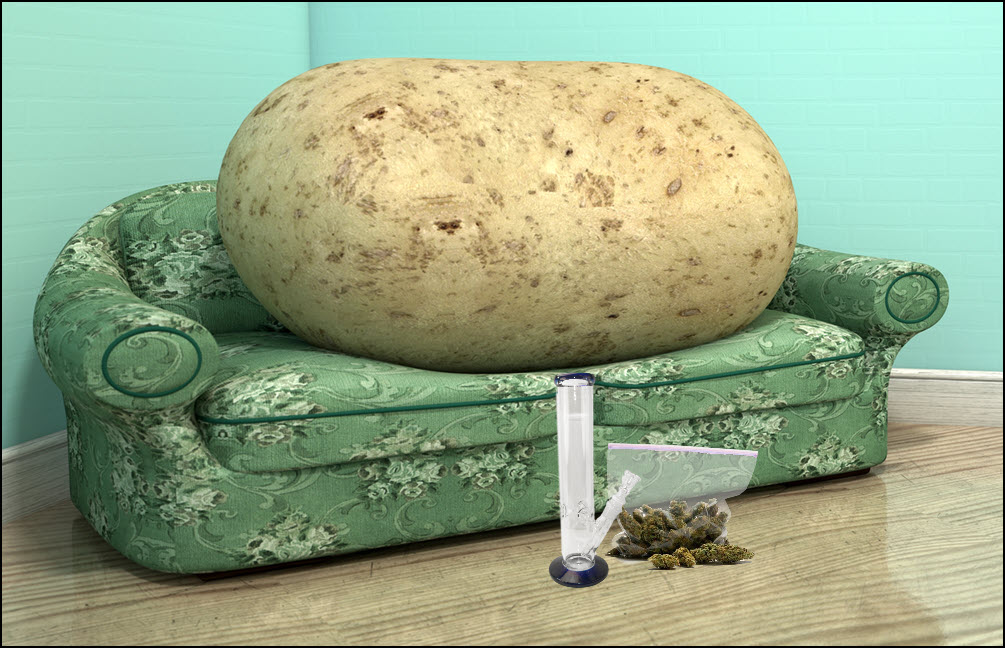

The Death of the Lazy Stoner Stereotype
https://neurosciencenews.com/attention-cannabis-psychology-25994/
https://www.reddit.com/r/psychology/comments/1cdsuhj/cannabis_users_stay_motivated_lazy_stoner_myth/
For decades, the stereotype of the “lazy stoner” has been deeply ingrained in our collective unconscious, thanks to years of prohibitionist programming. This image of the unmotivated, unproductive cannabis user has become a pervasive cultural trope, perpetuated by media portrayals and anti-drug campaigns.
However, this bias not only unfairly discriminates against the countless hardworking and diligent individuals who choose to consume cannabis, but it also fails to stand up to scientific scrutiny.
A groundbreaking new study challenges the notion that chronic cannabis users are inherently lazy and unproductive.
The research, conducted by the University of Toronto and published in the journal Social Psychological and Personality Science, surveyed 260 frequent cannabis users to investigate the effects of cannabis use on their daily lives. The findings paint a far more nuanced picture of the relationship between cannabis consumption and motivation, emotional well-being, and self-regulation.
The study’s most striking revelation is that chronic cannabis users exhibit the same level of willingness to exert effort on tasks while under the influence as they do when sober. This finding directly contradicts the popular belief that cannabis use invariably leads to a loss of motivation and productivity.
Furthermore, the research found no evidence of a “weed hangover” effect, debunking the idea that cannabis users experience a decline in emotional or motivational function the day after consumption.
While the study did observe some changes in behavior among participants while they were high, such as increased impulsivity and decreased orderliness, these effects did not translate into a lack of hard work, responsibility, or focus.
In fact, the researchers found that cannabis use was associated with enhanced positive emotions like awe and gratitude, although very heavy users experienced more negative emotions both while high and while sober.
As we delve deeper into this study and its implications, it becomes clear that the lazy stoner stereotype is not only outdated but also fundamentally flawed.
By shedding light on the misconceptions surrounding cannabis use, we can begin to dismantle the stigma that has long plagued responsible, productive cannabis consumers.
The University of Toronto study, led by Professor Michael Inzlicht from the Department of Psychology, provides compelling evidence that challenges the lazy stoner stereotype. By surveying 260 chronic cannabis users, defined as those who consume cannabis at least three times a week or more, the researchers gained valuable insights into the effects of cannabis use on motivation, emotion, and self-regulation.
One of the most significant findings of the study relates to motivation. As Inzlicht explains, “We found that’s not the case — their behaviors might change a bit in the moment while they’re high, but our evidence shows they are not lazy or lacking motivation at all.”
The researchers assessed participants’ willingness to exert effort in completing a task while high and found that they were just as motivated and willing to invest effort as when they were sober. This finding directly contradicts the notion that cannabis use inevitably leads to a decrease in motivation and productivity.
The study also delved into the emotional and self-regulatory effects of cannabis use. While the researchers observed that being high led to lower levels of self-regulation, characterized by increased impulsivity and decreased orderliness, they emphasized that these changes did not translate into a lack of hard work, responsibility, or focus. As Inzlicht states, “These things can detract someone from getting stuff done, but we didn’t find it made them less hard-working, responsible or able to focus.”
Furthermore, the study revealed that chronic cannabis users experienced a boost in positive emotions, such as awe and gratitude, and a reduction in some negative emotions, like fear and anxiety, while high. However, it is important to note that very heavy users, those on the higher end of chronic use, experienced more negative emotions both while high and while sober.
The data from this study illustrates that the myth of the lazy stoner is just that—a myth. While cannabis use may indeed have a relaxing effect, it does not necessarily lead to a loss of motivation or productivity. In fact, when an individual is passionate about a particular project or activity, cannabis can be used to enhance the process, especially when tackling stressful and challenging tasks.
It is essential to recognize that the relationship between cannabis use and productivity is not black and white. As Inzlicht points out, “Our data suggests that you can be hard-working, motivated and a chronic cannabis user at the same time.” This nuanced perspective challenges the simplistic and stigmatizing view of cannabis users as unmotivated and unproductive.
By shedding light on the actual experiences of chronic cannabis users, this study contributes to a more balanced and evidence-based understanding of the effects of cannabis on daily life. It encourages us to question our preconceived notions and to approach the topic of cannabis use with a more open and objective mindset, recognizing that responsible cannabis consumption and productivity are not mutually exclusive.
As we’ve seen, the University of Toronto study challenges the long-held stereotype of the lazy, unmotivated stoner. This research is just one example of how science continues to debunk the myths and misconceptions perpetuated by cannabis prohibition. Time and time again, we are confronted with the reality that many of the alleged harms associated with cannabis use are not grounded in fact, but rather in the feelings and biases of prohibitionists.
The lazy stoner trope is a prime example of a fabrication that has been used to stigmatize and marginalize cannabis users for decades. However, as this study demonstrates, chronic cannabis users are just as capable of being motivated, hard-working, and productive as their non-using counterparts. In fact, many cannabis enthusiasts find that incorporating the plant into their lives enhances their ability to stay active, focused, and engaged in their passions.
Contrary to popular belief, most stoners enjoy being active and engaging in a wide range of activities. From hitting the gym to tackling household chores, cannabis can be a helpful tool for staying motivated and focused on the task at hand. As one participant in the study noted, “I find that a little bit of cannabis helps me get into a flow state when I’m working on a project I’m passionate about. It helps me stay creative and motivated, even when the work is challenging.”
This sentiment is echoed by countless cannabis users who have found ways to integrate the plant into their lives in a responsible and productive manner. Whether it’s using cannabis to enhance their workout routine, to spark creativity in their artistic pursuits, or simply to unwind after a long day, these individuals are living proof that the lazy stoner stereotype is a myth.
So, to all the productive stoners out there, we want to hear from you. How do you incorporate cannabis into your life in a way that supports your goals and aspirations? What activities do you enjoy while under the influence? By sharing our stories and experiences, we can continue to challenge the stigma surrounding cannabis use and paint a more accurate picture of the diverse and dynamic community of cannabis enthusiasts.
In the end, the sticky bottom line is this: cannabis use does not define a person’s character, motivation, or productivity. It is time to move beyond the outdated stereotypes and embrace a more nuanced, evidence-based understanding of the role that cannabis can play in our lives. With science on our side, we can continue to dismantle the myths of prohibition and advocate for a more just and equitable approach to cannabis policy.
DEBUNKING THE LAZY STONER STEREOTYPE, READ ON..
SCIENCE DEBUNKS THE LAZY STONER MYTH, HERE IS WHAT WE LEARNED!
Cannabis News
How Not to Roll a Joint : Common Blunders Beginners Make
Published
3 days agoon
May 4, 2024By
admin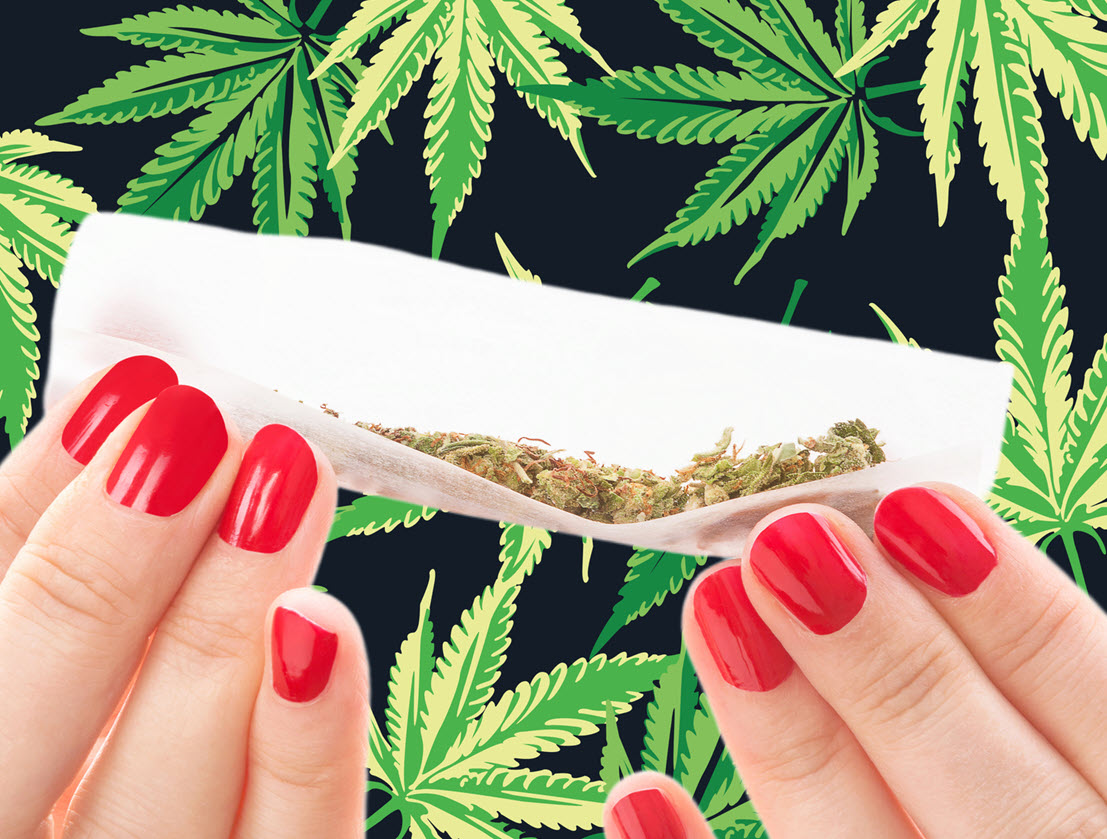
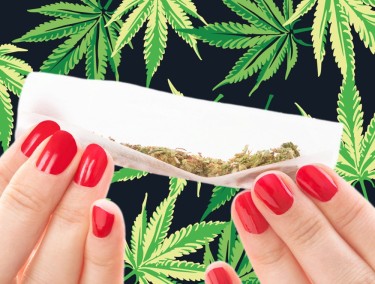
Imagine this: you’ve been introduced to the world of cannabis by a close friend in Sacramento who knows the ins and outs of rolling the perfect joint. You’ve enjoyed a few puffs here and there, basking in the friendship and relaxation it brings.
But then, a few days pass, and you find yourself craving that soothing sensation again. You decide to take matters into your own hands and roll a joint. And that’s where the trouble begins.
Rolling a joint seems like a breeze when you watch someone else do it – grind, roll, and puff, right? But when you try it yourself, it’s a whole different story. Don’t sweat it, though. This guide is here to help you go through the rocky road of joint rolling, focusing on what not to do.
Simply put, below, we’ll walk you through the common mistakes so you can enjoy that puff without the hassle.
The Grinder Grind: Avoiding the Powder Pitfall
Getting the grind right is key to a great joint. Many beginners either turn their cannabis into a fine powder or barely break it up. Both extremes are no-gos. If your grind is too fine, your joint will burn too quickly and unevenly. On the other hand, if it’s too chunky, air won’t pass through properly, making it hard to draw on the joint.
The goal is to achieve a consistency that’s neither too fine nor too chunky. Aim for small, even pieces to ensure a smooth burn.
To avoid making this mistake, use a quality grinder and turn it until you get perfect consistency. This balance ensures that your joint burns steadily without canoeing or going out. As a beginner, it might require a few trials and errors, but once you understand the right way to grind, rolling a joint will become quite easy.
The Stash Shortfall: Keep An Eye on Your Cannabis Supply
Another common mistake that newbie cannabis enthusiasts make is running low on stash, especially when rolling a joint. Just imagine: you come home tired from work, looking forward to unwinding with each soothing puff. But as you prepare, you find that you’re almost out of your favorite strain. Frustrating, right?
Well, It’s a common slip-up. That’s why it is recommended to keep tabs on how much you have left. Nevertheless, if you do find yourself short, there is no need to panic, as you can order your favorite cannabis products online.
In places like Sacramento, for instance, you can easily get flowers, pre-rolls, or extracts. Just look for Sacramento cannabis delivery– it’s super easy and convenient. You can choose from a wide variety of strains and have your selection delivered right to your doorstep.
This not only saves you a trip to the dispensary but also ensures you’re never stuck without enough cannabis to roll your next joint, enhancing your smoking experience and keeping the good times rolling.
The Loose-End Lament: Rolling Right
Stating the obvious, rolling a joint too loose or tight only results in product wastage. If it’s too loose, your cannabis might fall out, or the joint could burn too quickly because of too much airflow. You might find it hard to draw smoke through if it’s too tight.
So, what should you do? Well, the trick is to find a balance. Start by evenly distributing your ground cannabis along the crease of your rolling paper. Then, use your fingertips to gently shape the weed into a cylinder.
Next up, carefully tuck the unglued side of the paper around the cannabis, then roll it towards the glued edge. You want to moisten the adhesive strip of the rolling paper lightly. Think of it as sealing an envelope- not too wet or dry. Just enough so it sticks without tearing.
A gentle touch is important- roll it snugly but not so tight that you compress the cannabis too much. This technique ensures a smooth draw and an even burn, making your smoking experience much more enjoyable.
Remember, practice is essential. The more you roll, the better you’ll judge the right amount of tightness. Soon, rolling the perfect joint will feel like second nature.
To Sum It All Up
Rolling a joint might look simple, but there are plenty of little mistakes that can throw off the whole experience. That said, we hope this guide helps you sidestep those common pitfalls. Just keep practicing your rolling technique. Like any skill, it gets better the more you do it. Before you know it, you’ll be rolling joints smoothly and enjoying every puff.
ROLLING A SMOOTH JOINT, READ ON…

Mother’s Day weed gift guide 2024

Key Things To Know About Hemp And Marijuana Drinks

Indica, Sativa, Hybrid & More

A Deep Dive into the Benefits of Medical Marijuana for Mental Health

Canada’s medical cannabis exports jump to CA$220 million as domestic sales fall

The Best Simple Tequila Cocktails

Did the Death of the Lazy Stoner Stereotype Push Cannabis Rescheduling Forward?

How Not to Roll a Joint : Common Blunders Beginners Make

Cannabis Makes Gym Workouts More Fun Says New Fitness Study

Marijuana backers eye proposed federal regulatory change as an aid to legalizing pot in more states

Distressed Cannabis Business Takeaways – Canna Law Blog™

United States: Alex Malyshev And Melinda Fellner Discuss The Intersection Of Tax And Cannabis In New Video Series – Part VI: Licensing (Video)

Drug Testing for Marijuana – The Joint Blog

What you Need to Know

Cannabis, alcohol firm SNDL loses CA$372.4 million in 2022

NCIA Write About Their Equity Scholarship Program

City Of Oakland Issues RFP For Employee Training Programs

It has been a wild news week – here’s how CBD and weed can help you relax

A new April 20 cannabis contest includes a $40,000 purse

UArizona launches online cannabis compliance online course
Trending
-

 Cannabis News1 year ago
Cannabis News1 year agoDistressed Cannabis Business Takeaways – Canna Law Blog™
-

 One-Hit Wonders1 year ago
One-Hit Wonders1 year agoUnited States: Alex Malyshev And Melinda Fellner Discuss The Intersection Of Tax And Cannabis In New Video Series – Part VI: Licensing (Video)
-

 drug testing5 months ago
drug testing5 months agoDrug Testing for Marijuana – The Joint Blog
-

 Cannabis 1011 year ago
Cannabis 1011 year agoWhat you Need to Know
-

 Marijuana Business Daily1 year ago
Marijuana Business Daily1 year agoCannabis, alcohol firm SNDL loses CA$372.4 million in 2022
-

 Education1 year ago
Education1 year agoNCIA Write About Their Equity Scholarship Program
-

 Education1 year ago
Education1 year agoCity Of Oakland Issues RFP For Employee Training Programs
-

 Cannabis1 year ago
Cannabis1 year agoIt has been a wild news week – here’s how CBD and weed can help you relax





